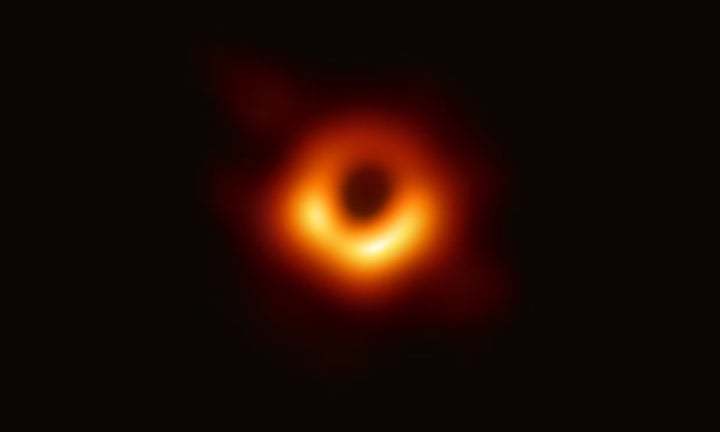17.03.2021
US astrophysicists have located a travelling black hole that is sucking in matter as it goes. Should we be worried?

ESO
Name: Supermassive black holes.
Age: God knows. The Big Bang is estimated to have occurred about 14bn years ago.
What was happening before that? If I knew the answer to that question, I would be picking up the Nobel prize for physics, not bleedin’ talking to you.
Appearance: Black, of course, because their gravity is too dense to emit light, but the ones that have been observed have glowing accretion rings around them. They look like our sun during an eclipse.
We have pictures then? Incredibly, we do. The first one was captured in 2019 – a supermassive black hole in the galaxy Messier 87, which is the small matter of 55m light years from Earth.
Remind me how black holes form.Common-or-garden black holes form when suns exhaust their thermonuclear energy and collapse in on themselves. There are millions of black holes in our galaxy, the Milky Way, alone.
And how many galaxies are there? A couple of trillion is the latest estimate. But can we get back to black holes, please. The origin of supermassive black holes, which have a mass millions of times greater than our sun, is disputed: some physicists believe they are formed by accreting matter – sucking it into its gravitational pull – while others believe they have existed since the origins of the universe. Almost every large galaxy is thought to have a supermassive black hole at its centre. Even the Milky Way has one – Sagittarius A, which is a mere 26,000 light years away from Earth.
Why don’t we have a photograph of our very own supermassive black hole? Because there is too much dust and gas in the way. Fancy a trip up there with your smartphone?
Why are you telling us all this today? Astrophysicists in the US have located a supermassive black hole that is wandering through space, sucking in matter as it goes. Are you all right? Why are you on the floor? Get the smelling salts, someone.
Sorry. I panicked there for a moment. Yes, a supermassive black hole travelling through space is a little disconcerting, but there’s no immediate cause for alarm. This one has a mass 3m times greater than that of our sun, but it’s in a galaxy known as J0437+2456, 230m light years from Earth, so we’ll probably be OK.
Will our sun become a black hole? Our sun is too small to become even a common-or-garden black hole. It will expand and become what is known as a “red giant”, probably drawing the Earth and other planets in our solar system into itself, before shedding its outer layers and becoming a “white dwarf”. That, my friends, is our fate. Oh, you’ve fainted again!
Not to be confused with: Rishi Sunak’s budget strategy.
Do say: “Good to see Pass notes tackling the big issues in theoretical physics.”
Don’t say: “We’re all doomed!”
Quelle: The Guardian

